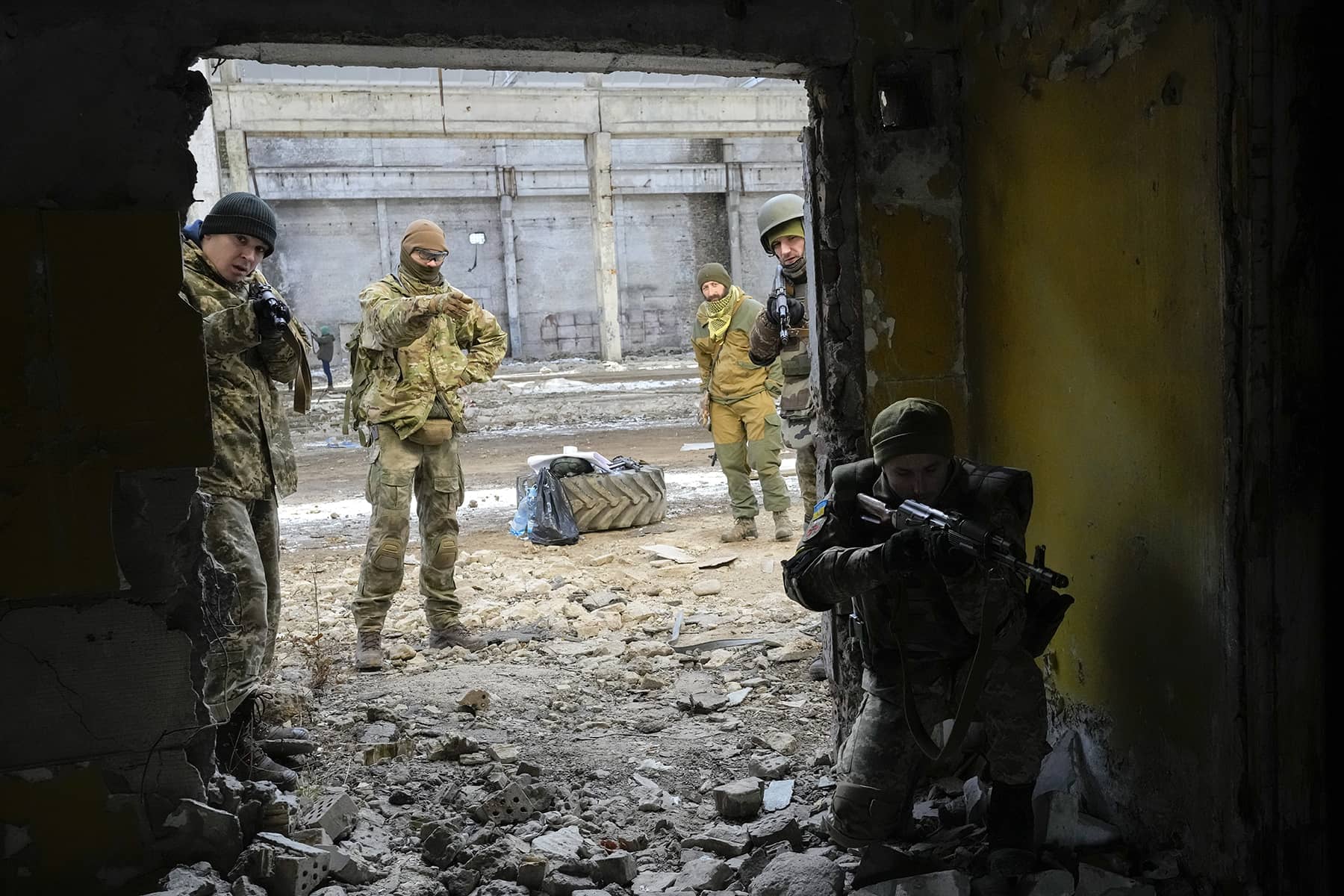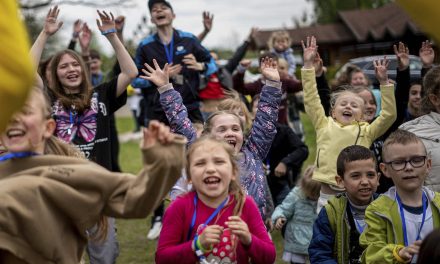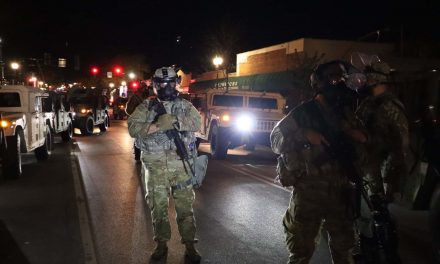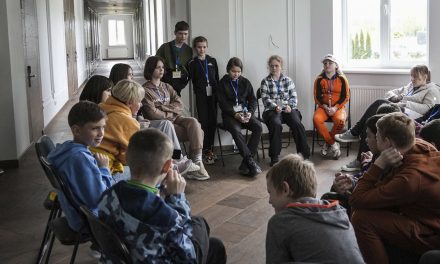
By David Roger Marples, Distinguished University Professor of Russian and East European History, University of Alberta; and Katsiaryna Lozka, PhD Fellow in Political Science, Ghent University
Belarusian opposition leader Sviatlana Tsikhanouskaya recently visited Canada for talks with Prime Minister Justin Trudeau and other officials.
Requesting more sanctions against Belarusian companies, she also appealed to Canadians to provide “non-lethal military aid” for the Kalinoŭski Regiment, fighting in Ukraine as part of the Ukrainian army. What is this regiment and why is it fighting in Ukraine? What are its goals?
The relatively small but spirited group of Belarusian volunteers has been fighting for Ukraine for years. They first emerged in 2014, when Russia annexed Crimea and instigated the war in Donbas.
Russia’s full-fledged invasion of Ukraine in February 2022 triggered further mobilization of Belarusian fighters. In an interview with an American journalist, one commented:
“We didn’t finish our revolution, we didn’t remove (Belarusian leader Alexander) Lukashenko, we didn’t prevent Russian troops from crossing our border to attack Ukraine.”
Prominent in Ukraine
Alongside Georgians, Belarusians make up the most prominent contingent of foreign fighters in Ukraine. Many have been killed and dozens wounded since the start of Russia’s invasion.
Belarusian volunteers are opponents of the country’s dictator Alexander Lukashenko. Many of them experienced repression after the flawed 2020 presidential elections. They believe a decisive Ukrainian victory could hasten a regime change in Minsk.
The regiment originated in March 2022 at a recruitment centre in Warsaw, formed by ethnic Belarusians under the command of the Ukrainian Armed Forces. It comprises 440 to 500 troops.
In May, it became known as the Kastuś Kalinoŭski Regiment, named after a Belarusian writer and revolutionary who initiated an uprising against the Russian Empire in 1863.
Expansion and actions
Shortly, it expanded into two battalions, Litvin and Volat. Soldiers’ average salary is about 1,400 euros monthly, but as citizens of Belarus, they cannot attain officer status in Ukraine.
The regiment has fought alongside Ukrainian forces in key battles of the war: on the front line in Severodonetsk and Lysychansk in northeast Ukraine, and Mykolaiv in the south. They also participated in the liberation of the Kherson region.
Earlier, Belarusian soldiers defended Bucha, near Kyiv, now a symbol of the Russian army’s barbarism. In September, the Bucha City Council presented them with an award “for the defence of Bucha.”
Women in the regiment
Like the 2020 protests in Belarus, the regiment has women front and centre. Its spokesperson is 24-year-old Kryscina “Chabor” Stankevich. She participated in the anti-authoritarian protests in Belarus and had to leave the country. When Russia invaded Ukraine in February 2022, Stankevich decided to join the Belarusian battalion.
There are a number of Belarusian women in the regiment. Many are doctors and some deal with administrative and financial issues.
Anastasia “Sever” Makhamet, 30, is the commander of the evacuation battalion Volat. In 2020, she was an activist in the student movement against Lukashenko.
Facing persecution, Makhamet fled to Ukraine. After Russia’s invasion, she joined the Ukrainian army. Many women were arrested and tortured in Belarus in 2020.
“The sense of fear is blunted here (in Ukraine). Maybe because I had good training in Belarus,” Makhamet said in a recent interview.
Response of Lukashenko’s regime
Battle-hardened Belarusian fighters are a threat to Lukashenko’s regime. The regiment’s goal is to free Belarus by first “liberating Ukraine.”
In March, Lukashenko called the Belarusian fighters “insane citizens” and continues to persecute members of their families.
Consequently, the Investigative Committee of Belarus filed a criminal case against the Kalinoŭski Regiment. Relatives and friends of the warriors are subjected to interrogation and even arrest.
Belarusians inside the country continue to be detained for attempts to join the regiment. More than 90 per cent of the population opposes Belarus’s involvement in Russia’s war against neighbouring Ukraine.
Relations with Ukraine and the opposition
Both the regiment and Tsikhanouskaya consider the Belarusian and Russian regimes their enemies. Ukraine, meantime, emphasizes the regiment’s efforts to defend Ukrainians. Kyiv Mayor Vitali Klitschko has appeared in public with regiment fighters.
Ukraine’s stance towards Belarusian émigré opposition remains cautious. Even though an alliance between the two seems natural, the Ukrainian government did not respond to Tsikhanouskaya’s offer in October “to build an alliance with democratic Belarus.”
Despite similar goals, relations between the Kalinoŭski Regiment and Tsikhanouskaya’s leadership team are sometimes tense. Deputy Commander Vadim Kabanchuk commented recently that the regiment distrusts Valery Sakhashchyk, who is responsible for military affairs in Tsikhanouskaya’s shadow cabinet.
Notably, one fighter left the regiment because he perceived his role as a soldier, not a political activist.
There are different opinions about the regiment’s goals. Is it the future army of Belarus that can bring about regime change, or could it form an alternative government?
Its existence is a sign that many young Belarusians see no future in their homeland and feel that peaceful protests have failed. The only option is to fight: first against the Russians, and ultimately against the Lukashenko regime.
Efrem Lukatsky (AP)
Originally published on The Conversation as Fighting for a future: The Belarusian regiment in Ukraine is staking its claim on democracy
Support evidence-based journalism with a tax-deductible donation today, make a contribution to The Conversation.













